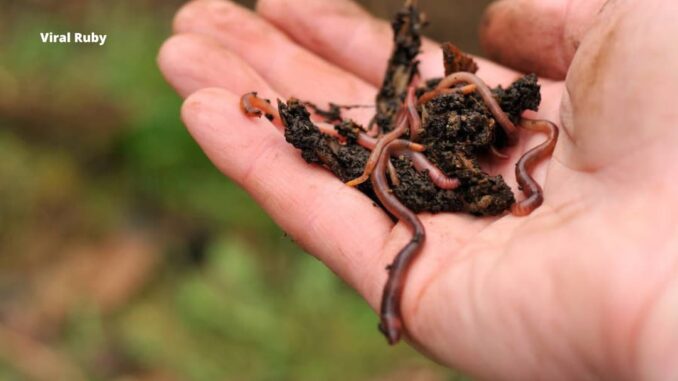
Do Worms Have Babies Or Lay Eggs?
Do worms have babies or lay eggs? The answer is both. Earthworms reproduce by laying eggs and giving birth. This article will help you learn how a Worms Babies reproduces. Read on to learn how a worm reproduces! Then, you can try to reproduce your worms yourself! You can also learn how to make worm food for your pets. It is possible that you may even become a mother one day!
How do earthworms have babies? – Earthworms Babies
We’ve all wondered how earthworms have babies, but are you sure you know how they reproduce? These little creatures have similar muscle groups in their digestive tracts, and can reproduce by pairing with another earthworm. When mating, a worm rubs its body against another worm’s body and transfers sperm to the female worm’s egg. After the sperm and egg have fused, the two earthworms develop a cocoon that contains several little worms.
Get Also: What Babies Do Faster Than College Students?
In order to make Worms Babies, earthworms have female and male reproductive organs. Female earthworms produce eggs, while male earthworms produce cocoons containing fertilized eggs. Both sexes use a hermaphrodite method of copulation, aligning their head to head and exchanging sperm packets. Once the eggs have been fertilized, the sperm and egg are separated and the cocoon is ready to hatch.
The egg-laying process takes 27 days. The eggs are tiny versions of the adults, and the Worms Babies don’t change much as they grow. Some earthworm species go dormant when the climate is too dry or too cold, but some Worms Babies remain active as eggs during the winter and summer. When the egg-laying period is complete, the earthworm will have produced its first baby and will begin the breeding cycle again.
Do You Know: How Often Do Mice Have Babies?
Earthworms live in the top meter of soil and spend most of their time near decomposing plant material. However, some species spend time at the surface, sometimes emerging at night to avoid droughts. Other species stay deeper, surviving at least five meters below the surface. Worms Babies body can grow as long as five meters! They are a common part of our landscapes and if you don’t feed the worms and prevent them from reproducing, the worms will die.
Do worms have babies or eggs? – Worms Babies
In the question, “Do worms have babies or eggs?” you’re probably curious to know what happens during the reproduction process. Worms Babies are hermaphrodites, which means that they have both a male and a female organ. When they mate, they form an egg capsule in their clitellum, which is a sack that resembles a lemon. Within fourteen to twenty-one days, the egg capsules will hatch and baby worms will emerge. Each Worms Babies egg capsule contains one to five worms. Within sixty-to-90 days, the young will be fully mature and ready to reproduce sexually.
For More: How Do Worms Have Babies?
As with humans, Worms Babies do not have true skeletons, but they have a hydrostatic skeleton that is filled with fluid. Earthworms, one of the largest members of the Oligochaeta order, have a closed circulatory system and a central and peripheral nervous system. The central nervous system consists of two ganglia situated above the mouth. Each segment has chemoreceptors that connect motor neurons and great sensory cells.
Adult earthworms are easy to identify when they are young, as they are very small and white. The male worm stays inside the intestine, while the females emerge to lay their eggs. As the babies grow, they begin feeding on organic matter. As they mature, their color changes and clear segments become apparent. These characteristics are a main reason why earthworm populations expand so rapidly. In addition to the reproductive cycle of Worms Babies, earthworms are hermaphrodites, meaning they have both male and female reproductive organs.
Baby Learning: How to Use Black and White Pictures For Babies
When it comes to reproduction, Worms Babies reproduce both asexually. Without reproduction, earthworms would not exist. Earthworms will mate every seven to ten days. The process lasts about 24 hours, but the resulting young will be miniature versions of the adults. Unlike the egg, there is no larval stage for earthworms. Rather, the young are dependent on their mother and will not be able to reproduce independently.
Do worms give birth or lay eggs? | Worms Babies
The answer to the question, “Do worms give birth or lay eggs?” may seem obvious. In reality, a worm’s reproductive process involves both a cocoon and eggs. In the cocoon, the eggs and sperm develop, and as a result, the worm’s embryos are fertilized. Depending on the conditions of the cocoon, up to twenty potential worm embryos can grow inside. After the eggs hatch, the newborn worms emerge from the cocoon and burrow into the soil. Their cocoons can remain dormant for months or years.
Do you know: McDonalds Ty Beanie Babies 2021
Adult earthworms are hermaphrodites, which means they can reproduce either by giving birth or laying eggs. Female earthworms give birth to multiple eggs when they enter the clitellum, while male Worms Babies lay only one egg. Although the male and female worms are similar in appearance, they differ in how they reproduce. Female earthworms have two pairs of sperm and one female is sterile and the other sterile.
After mating, earthworms will exchange seminal fluid, or seminal fluid. They will then separate and form mucus rings around themselves. During mating, eggs are laid in these rings and will hatch within 3-6 weeks. The eggs are hatched within a cocoon containing three or four baby worms. These worms are hermaphrodites – meaning they possess both male and female reproductive organs.
See Also: When Do Squirrels Have Babies?
While Worms Babies are hermaphrodites, they also have regeneration capabilities. The most common detachment is the tail, but they can regenerate larger segments as well. However, less than half of these eggs will survive until they hatch. After a few weeks of growth, the baby worm will emerge from the cocoon and begin its life as a wormlet, or larva.
How does a worm reproduce? – Worms Babies Reproduction
The simplest explanation of how Worms Babies reproduce involves pushing their bodies forward. This action is done by producing a special substance called clitellum. The substance then forms a tube around the earthworm and slips over the openings of both the male and female. The male then releases sperm, which then fertilizes the egg. The eggs are laid in the slime tube, which protects them from the environment.
See More: Why Do Babies Stare at Me?
While some earthworm species can self-fertilise, many of them must reproduce by mating with the same species. During mating, they line up head to tail, exchange spermatozoa and release them into the female’s pore. The newborn worms emerge a week to ten days later. These cycles of reproduction make it possible for earthworm populations to double every 60 to 90 days.
In addition to sexual reproduction, Worms Babies can also self-reproduce. In this case, they regenerate new segments if one or both of them becomes damaged. This is why most worms regenerate tails and heads, and only half of a split worm will grow back into a full worm. The other half of the worm regenerates into a new, independent worm.
Learn More: Why Do Babies Avoid Grass Spiritual Reasons
Worms Babies also have a distinct reproductive process. During mating, earthworms overlap their front ends ventrally. After mating, they secrete a ring around themselves and inject eggs. Once the eggs are laid, earthworms will crawl apart to inject them into the soil. The digestive system of earthworms is divided into many regions. The pharynx, esophagus, crop, and gizzard are the main components of this system. The pharynx and esophagus contain chemoreceptors and sensory cells that enable earthworms to eat plant and animal waste.
How many babies does a worm have?
When earthworms breed, they produce cocoons containing one to 10 fertilized eggs. Their cocoons usually last two to three months and hatch in the spring. This process may take anywhere from three weeks to a year, depending on the species. Earthworms are hermaphrodites, meaning that the female lays the eggs and the male fertilizes the eggs through a glandular band. After fertilization, the mature cocoon leaves the body of the mother.
Learn Also: How Many Babies Do Squirrels Have?
Worms Babies produce a new generation every seven to 10 days. The eggs of Worms Babies hatch from the cocoon after about a month and the newborns emerge about two to three weeks later. Depending on the species, one egg can hatch into two or three worms, and each one is approximately an inch long. The new Worms Babies hatch from the cocoon and reach sexual maturity in 50 to 90 days. While some species may lay only one egg, others can produce more than 20 eggs.
Adult red wigglers are known to eat up to half of their body weight each day, and they feed off of leaf litter, shredded paper and cardboard. Adult red wigglers thrive in 65 to 85 degrees Fahrenheit. In a healthy worm bin, their population doubles every ninety days. Because worms are hermaphrodites, they reproduce continuously.
Get More: When Do Babies Start Saying Mama?
Unlike other species, Worms Babies reproduce by laying their eggs. During the first two months of their life, they develop sex organs. They reach their full size in a year or two. Some species can live for eight years. The full size of earthworms can range from half an inch to ten feet in length. If the earthworm is cut, its head will regenerate but the tail will die as it lacks vital organs.

Leave a Reply